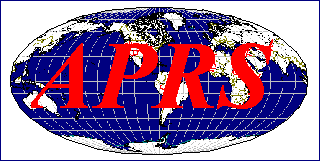
Rapid Manual Positioning without GPS

Using the TH-D7 to manually enter positions
During a local event(see page) over 5 square miles with many fixed sites of interest, we had over 10 users with TH-D7 APRS HT's. But because the event was grueling and dirty and physical, we did not want to risk having GPS's and their wires and cables encumbering the participants. Thus we devised two schemes to allow them to rapidly report their position at any of the numbered points in the event.
GRID METHOD: Two methods were used. First, we prepared a printed map with a grid overlay. The users could easily see their coordinates and usually only enter the least-significant two digits of LAT/LONG to locate themselves anywhere on the map as shown below:

TABLE METHOD:
This second method can be used to place a station (or object) in the
vicinity of any of up to 999 pre-tabled positions, with only
the simple entry of a 3 digit number. We did this by declaring
the area of N40,00 and W40,00 out in the middle of
the Atlantic Ocean as special and then using
the hundredths digits to allow entry of the pre-identified locations.
Typically, we use the first digit as a "table" selection and then
the other two digits are the selection in that table. Many events
have so few points, that a table of 0, and then just 2 digits can be
used. For example, using the POS key on the D7 radio and entering
this location would place the user in the vicinity of location number 23:
N40 00.00 <== the .00 indicates table 0 and 0 ambiguity
W40 00.23 <== the .23 here indicates location 23 in table 0
See the POINTS.TXT file which details this system
POINTS.TBL File: The locations of all the points to be used
is trivial to generate. Simply using APRSdos, move the cursor around
the map and use the INPUT-ADD command to create an object at that location.
Then save this as a .HST history file. Then simply edit in the 3 digit
number for each object in the file and save it as a POINTS.TBL file
and you are done.
See the POINTS.TBL file which is an example POINT file.
To all observers of the result, they can see no distinction between the
positions of stations that used GPS, or the GRID method, or the TABLE method.
All positions are valid and useful. Though typically, the manual methods
should include a degree of ambiguity so that only their presence in the
vicinity of the position is conveyed to the viewer.
.